There’s around 250,000 hair and beauty professionals working across the U.K., and Glambook wants to be the sharing economy platform that takes care of them.
The company recently raised $2.5 million at a $12 million valuation, and I managed to talk it into letting me share its pitch deck with you to see how the company wove its story to its investors.
We’re looking for more unique pitch decks to tear down, so if you want to submit your own, here’s how you can do that.
Slides in this deck
Glambook raised its investment with a 19-slide deck, and they agreed to share it with us in full:
- Cover slide
- Problem slide
- “Unsolved for a reason” — opportunity slide
- Solution slide
- Value Proposition slide
- “People love our product” — product validation slide
- Market slide
- Addressable market slide
- Traction slide
- “Why Now” — timing slide
- Positioning slide
- Business Model slide
- Go-to-market slide
- Road map slide
- Social Impact slide
- Team slide
- “Here is our story” — the “why us” slide
- Summary slide
- Contact slide
Three things to love
For an early-stage company, Glambook has a lot going for it — it is seeing meaningful traction and operates in an interesting market. The biggest challenge the company has to overcome is convincing investors that this is a market that is, indeed, clamoring for a technology makeover. And it does a pretty damn good job.
Here are three things that work particularly well:
Tractiooooooooooooon
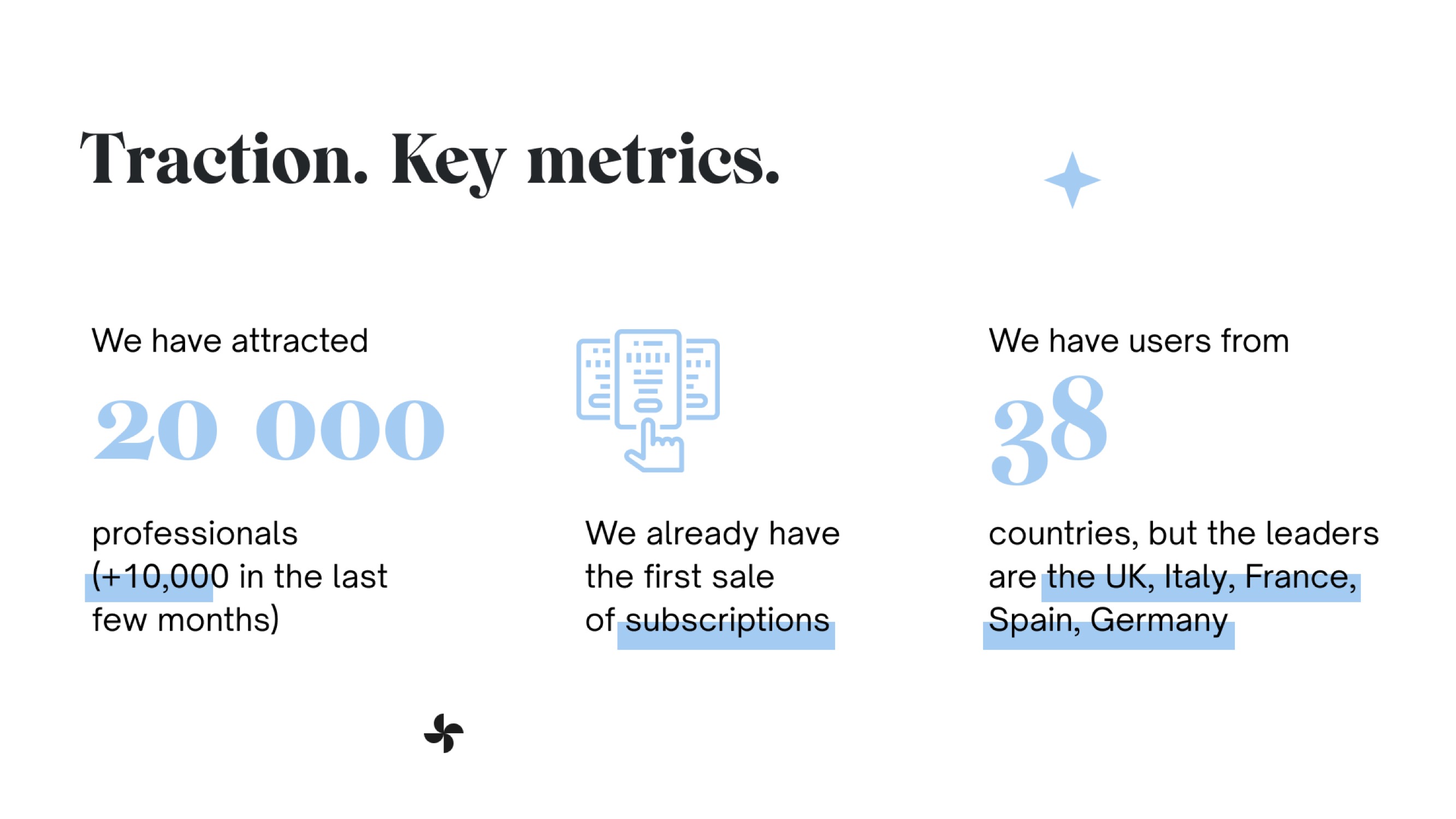
Is your team awful? Is your product garbage? Is your market niche? I’m not saying that any of those things apply to Glambook, but in general, none of it matters if you have traction.
You can counter almost every question with: “Perhaps it’s stupid, but look at the numbers. It’s working!” Really, the question becomes why it works, and if you can keep it working, even at scale.
For a relatively small, $2.5 million round, having 20,000 customers across 38 countries is impressive. (Although I also note that the most important traction metrics — How sticky is it? How many orders are facilitated? How much revenue is being generated? — are missing.)
More importantly, saying there are subscription sales happening without including monthly or annual recurring revenue figures isn’t great storytelling. I’m impressed by the number of countries and the number of professionals on this slide, but I also want to know the number of clients and the value of the subscriptions. Not including those figures makes me immediately suspicious.
Those are asides, though. The company is showing real, measurable, important figures. The takeaway here is that if your company has those, show them off with pride. Why? VCs invest in inherently high-risk businesses. Any traction — and any progress — goes a long way toward showing that the business is at least partially de-risked.
As I mentioned, if you’ve got traction, you’re doing something right, and that something can probably be developed into a good company one way or another.
A rising tide
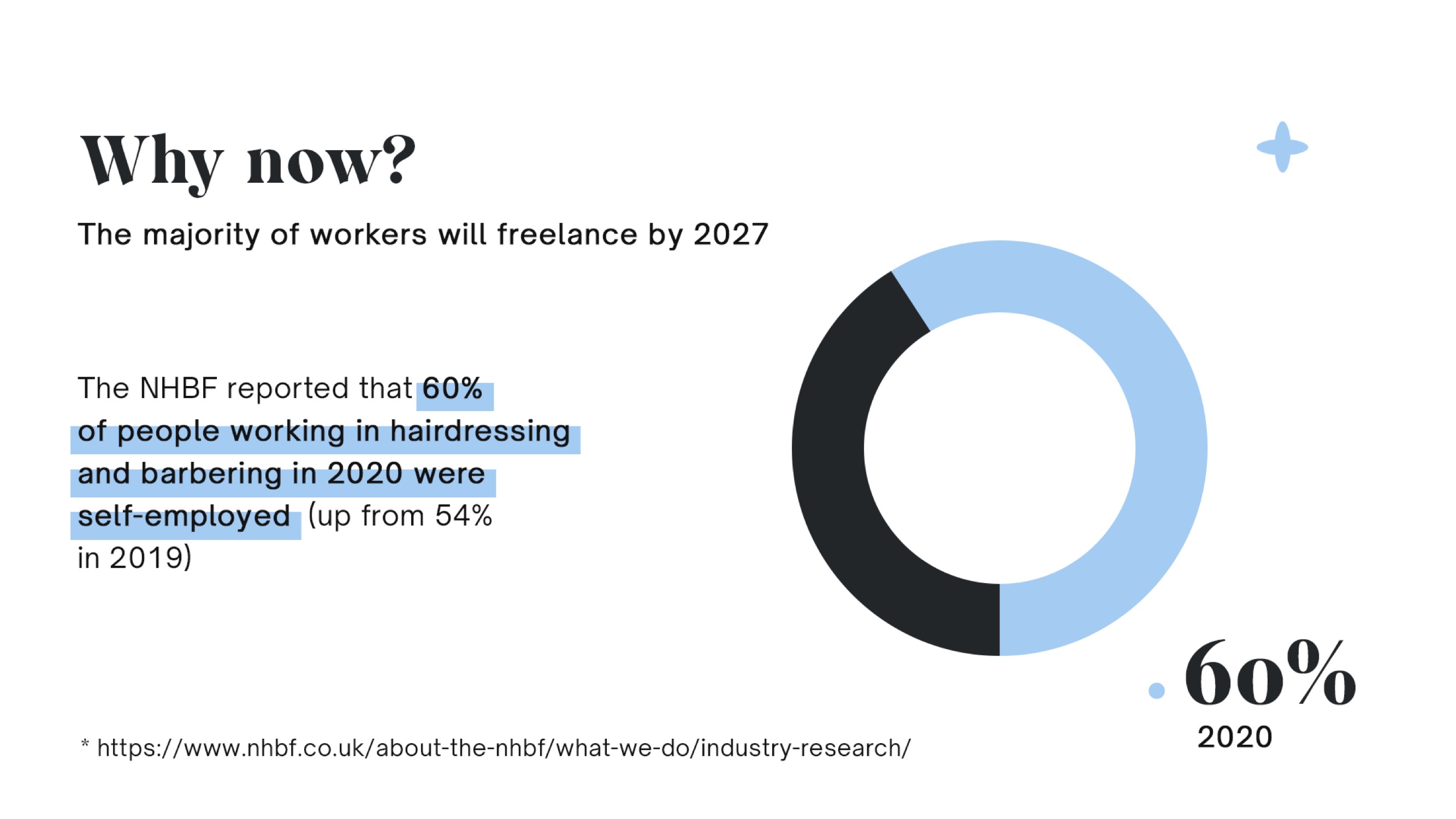
Glambook uses this slide to tell the story of a market in evolution. In 2019, 54% of hairdressing and barbering professionals were self-employed, and by 2020, that had grown to 60%.
I’d have loved to have a graph pulling this data back further into the past for a longer timespan so I could see more of a trend, but there’s something powerful happening in this market, without a doubt. The story Glambook is selling here is that “Things are changing, and we are right there as they do,” which is the perfect place to be for an early-stage startup.
If you can weave macroeconomics and big societal changes into your pitch and show off how you are benefiting from them, you potentially have a winner.
This slide is titled “Why now,” but I think it walks hand in hand with another slide, titled “Unsolved for a reason.” I’ll talk more about that later, but suffice it to say that with this deck, the company signals some of its biggest challenges without offering a 100% satisfactory answer.
“This market is bigger than you’d think”
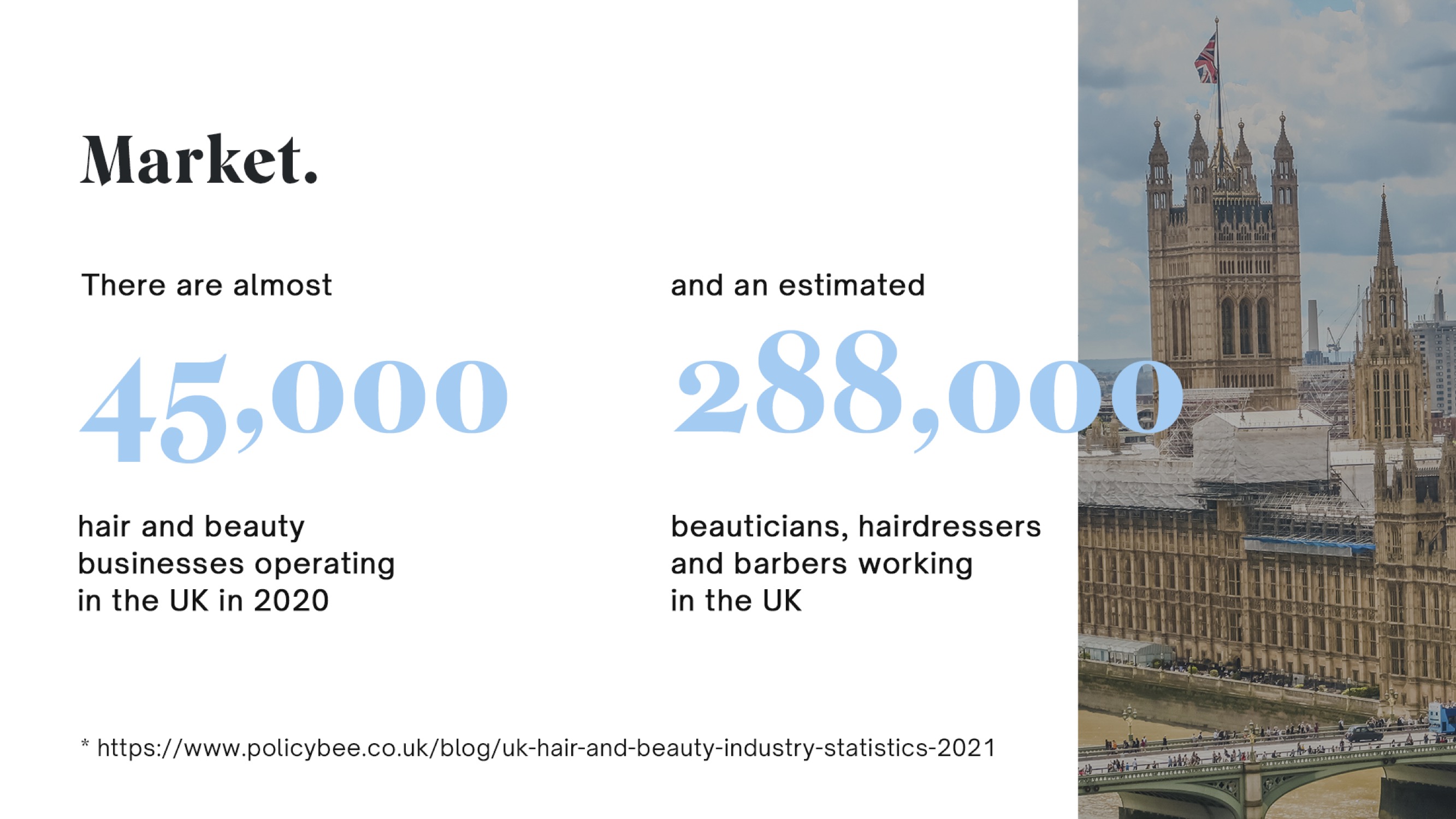
A lot of the time as a VC, you’ll be pitched companies in industries and markets you aren’t that familiar with. I had to sit with that for a moment in this case.
Beauticians, hairdressers and barbers — is that really a big enough market to build a business empire around? The U.K. has a population of 67 million or so, so if those numbers are okay, there’s around 1,400 people per hair and beauty business. That would have to mean that around 4% of the U.K. population works as beauticians, hairdressers and barbers.
Just as a gut check, that sounds a little bit high to me, but a quick Google search results in the article the company cites on this slide, which seems to confirm those numbers. That is exciting, not least because a few searches also don’t identify a clear market leader in this space. Could Glambook become that market leader?
The pitch here is slightly unfocused: Glambook is a Berlin-based company that uses a lot of U.K.-based stats while also saying it has customers in 38 countries (I’ll get to that in just a moment as well.). The important part of this particular slide is illustrating that there’s a huge market that’s ripe for disruption.
As an investor, that’s the kind of thing that makes me lean forward and pay extra attention.
In the rest of this teardown, we’ll take a look at three things Glambook could have improved or done differently, along with its full pitch deck!
Three things that could be improved
As you’ll see in the full pitch deck at the end of this post, there are a number of small issues. Some of the language used is clunky, and some of the grammar is sufficiently off that I’m left with the impression that the deck wasn’t created by a native English speaker.
That’s okay, but attention to detail in external-facing documents is crucial, especially if you’re asking someone to write a million-dollar check.
There are a few other quirks, too, that I’d have tried to correct before using this deck to raise money:
Unsolved for a reason
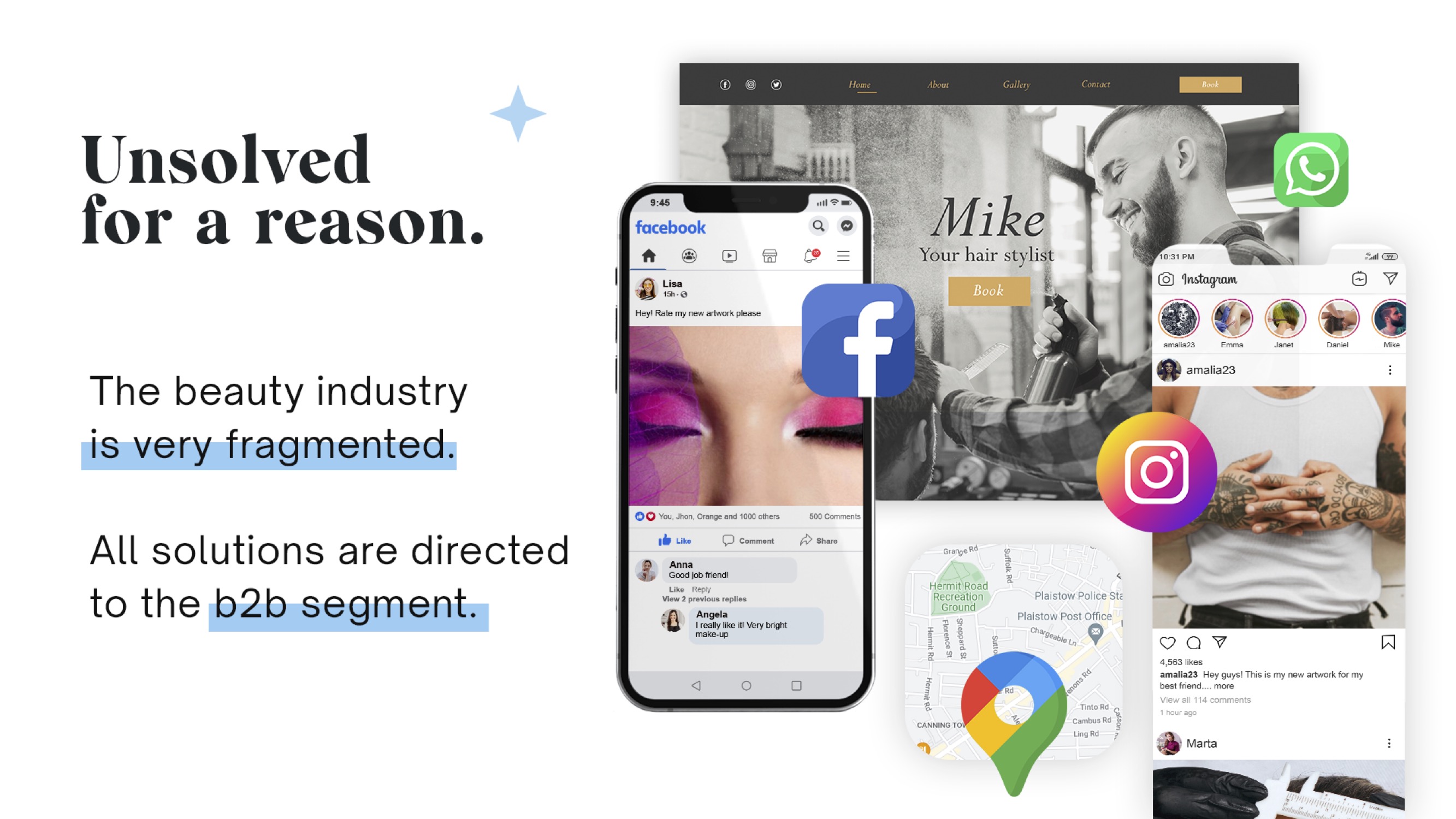
Glambook uses its third (!) slide to show how this problem is “unsolved for a reason,” citing that most solutions are aimed at B2B, and that the market is very fragmented.
I take the former to mean that a lot of solutions are booking or scheduling platforms, while the latter means that there’s no obvious way of getting a foothold on this large, varied and geographically and socio-economically splintered market. I get all of that, and it’s good to get that out in the open.
What the company doesn’t do next, however, is explain how Glambook will overcome this market fragmentation, and I think that could be a deal breaker for a lot of investors. After this slide, which airs a huge, potentially deal-torpedoing problem, the company skips straight to a product slide (“We’ve cracked a solution”) that talks about the product’s features but doesn’t directly address the fragmentation issue.
Given that the company successfully raised money, I believe that Glambook must have an answer to what it’s going to do about the market fragmentation but not addressing that head-on in the slide deck seems like a pretty serious issue to me.
A better value proposition
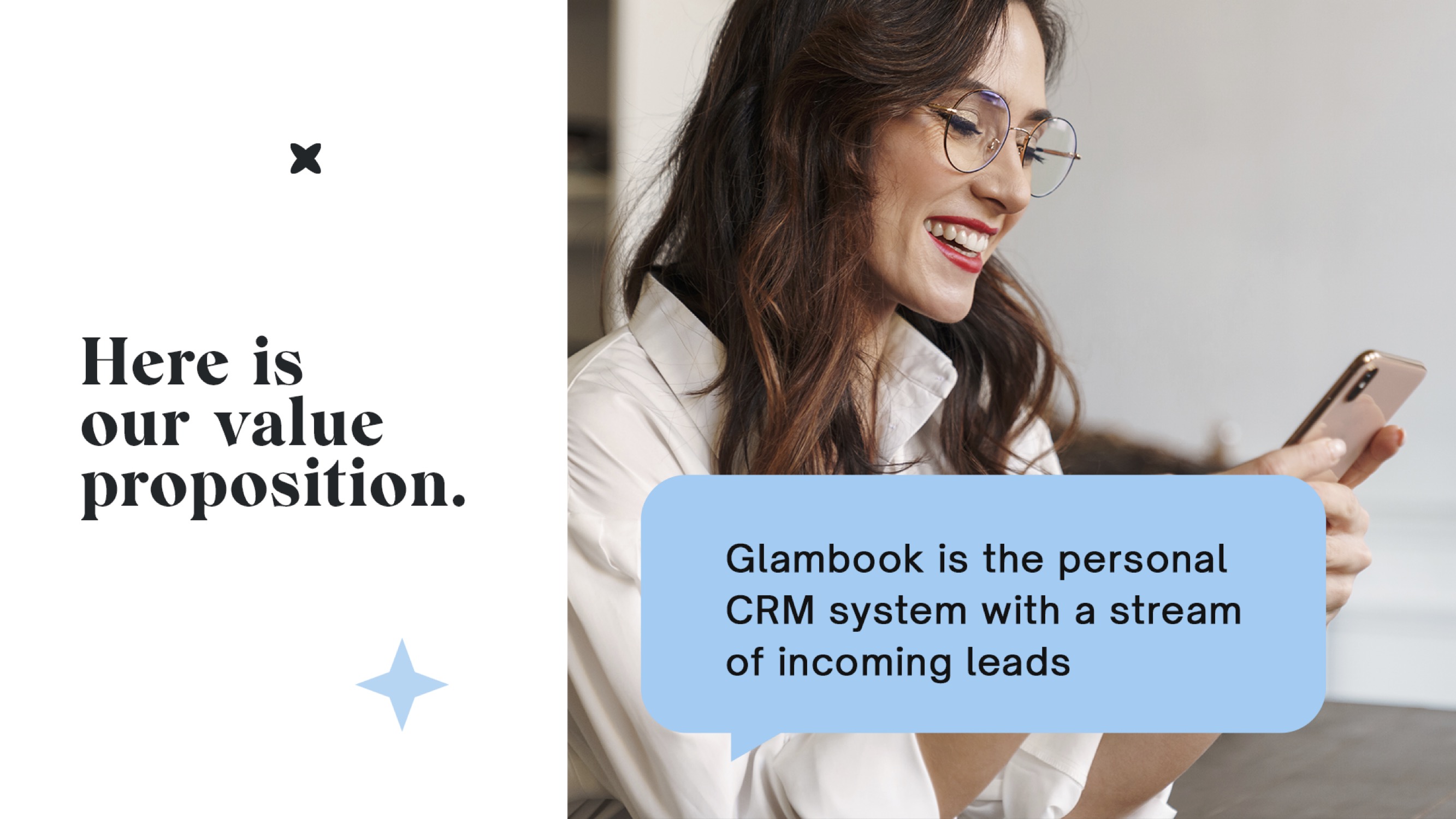
After explaining that the market is fragmented and that it has “Cracked a solution” without saying what the solution is, per se, the company says its value proposition is “The personal CRM system with a stream of incoming leads.” To me, that feels needlessly tactical and product-driven and doesn’t actually outline a value proposition that makes sense.
For one, the company could benefit from making this slide value driven; Yes, people who have worked in sales or marketing know the power of a good customer relationship management (CRM) tool, but this is an opportunity to describe the benefits and explain the why.
Instead of “a personal CRM system,” would it be possible to put some data behind this? Something like “By using the Glambook CRM, our providers see a 20% increase in customer loyalty, and a 30% increase in per-visit revenue, while reducing no-shows by 33%” would be a lot more powerful and explains not just the what (a CRM) but the why (less wasted time, more revenue, steadier income).
The second problem is that this isn’t really a value proposition as such. As far as I can tell, the company is proposing a three-sided marketplace: Renting chairs in the co-working spaces it is opening, offering provider tools to help book and manage customers, and customer tools to connect and work with providers. A much better value prop, then, would be three-sided.
When creating value propositions, it’s often helpful to use the format: “For [user persona], we provide [product], so they can [benefit], unlike [existing solution], to ensure all the value is captured.”
You can play with the order and the exact phrasing, but using that rough framework, I came up with something like this:
- For salon owners, instead of the chairs in the salon being empty 70% of the time, we provide real-time availability and booking tools so chairs can make money instead of collecting dust.
- We help beauty providers with tools to help them spend more of their working time actually working rather than doing admin and marketing.
- For customers, instead of risking your beauty regime to an unknown entity, we make it easier to find a stylist, book an appointment and pay within the app — all with reviews front and center so you know you’re getting a high-quality professional.
Those are clear value propositions that show what the benefits are to each of the user groups. Now, I should point out that this is too wordy for a slide deck, but you could condense it a lot. Imagine a slide that included those things and compressed it all into an easy-to-digest format.
Okay, fine I won’t make you imagine, I spent a few minutes throwing an example together:
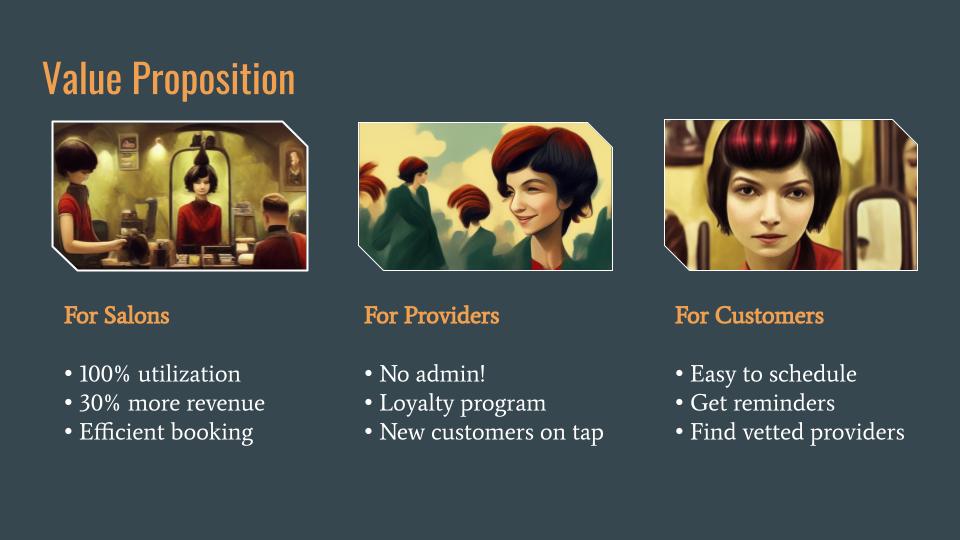
Your total addressable market is how big?!
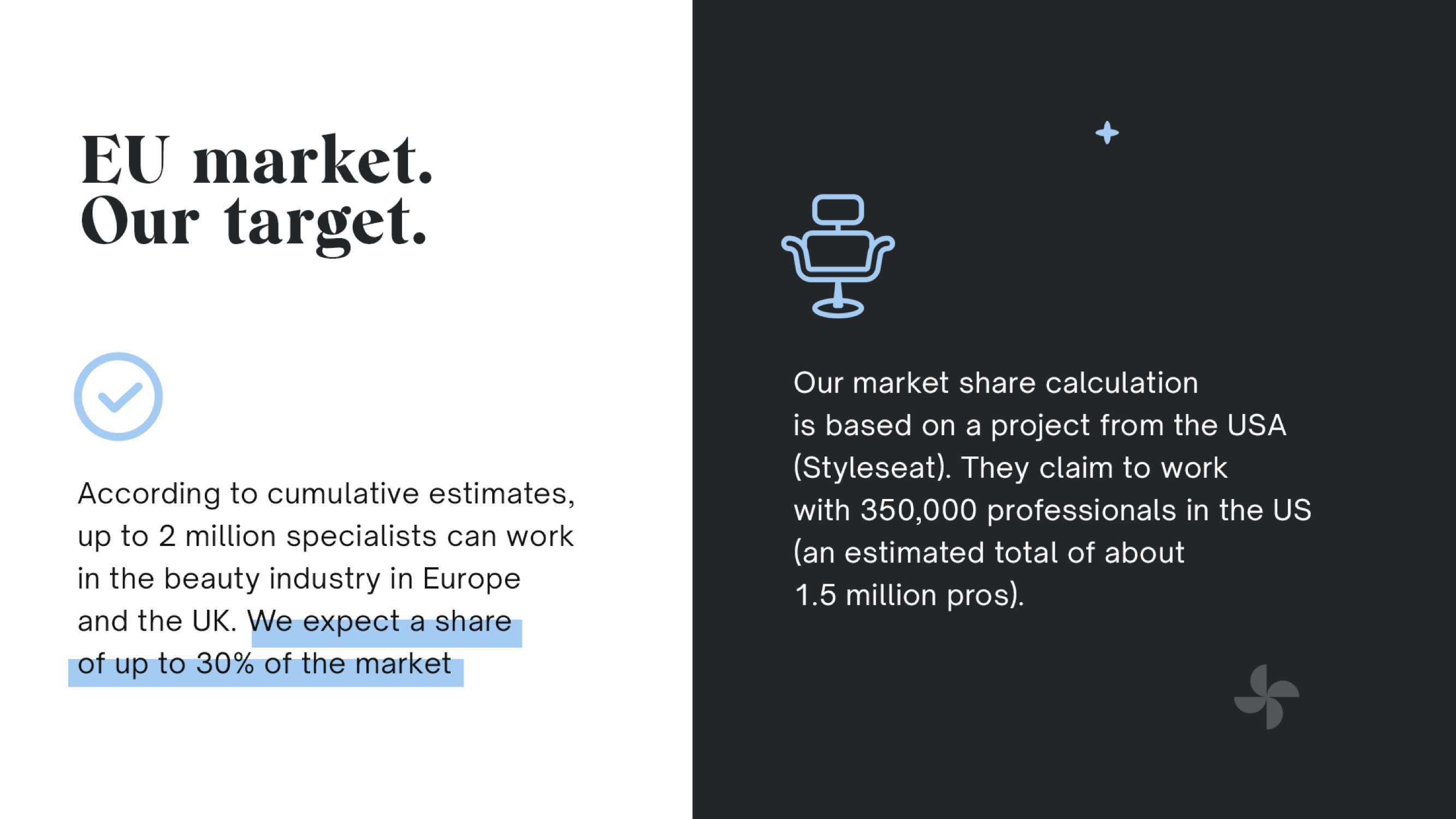
Slide 8 is an extraordinarily risky slide, in my opinion, for a couple of reasons. Being able to say, “There are 2 million specialists,” in the EU and Europe is a valuable part of the market sizing effort, but the company currently claims it has 20,000 customers.
That means it has a roughly 1% market share currently. The downside is that Glambook doesn’t really say anything about what those 20,000 customers are currently worth, how it got them, whether its provider acquisition engine is working, nor where its end customers are coming from.
On top of all that, the deck doesn’t include an operating plan outlining where Glambook is expecting to get its growth.
Don’t get me wrong; If you think you have a legitimate path toward owning 30% of the market, then by all means, put that in your slide deck. But be prepared to defend it and show the plans for how you’re going to get there. Without that, it’s not only unrealistic, it makes the founders look as if they don’t know what they are doing, which throws up a broader set of warning flags.
I think there’s a fair bit of data missing in this deck. Most notably, the customer acquisition cost and expected lifetime value for each of the target audiences for the platform. These costs and values will be different for the salons, the providers and the customers. Balancing customer acquisition for a marketplace play is notoriously hard, and it’s pretty damning that I’m not seeing any evidence of any plans to tackle that challenge in this pitch deck.
The full pitch deck
If you want your own pitch deck teardown featured on TC+, here’s more information. Also, check out all our Pitch Deck Teardowns and other pitching advice.
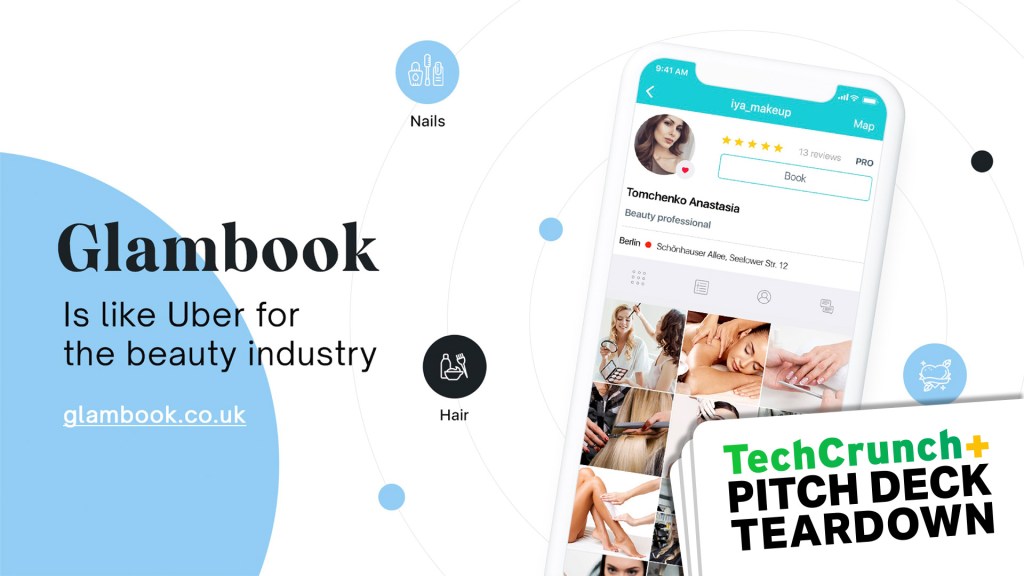






























Comment